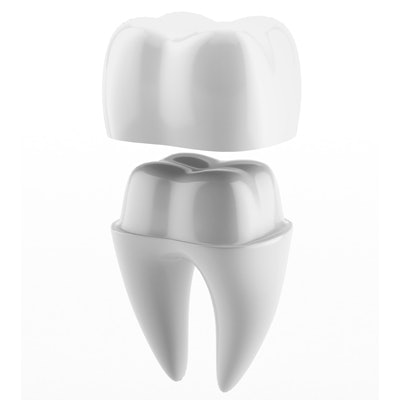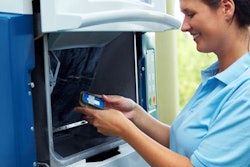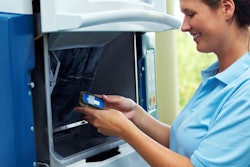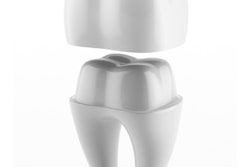
What materials do you use for single-tooth, partial-crown restorations? Particle-filled composite resin CAD/CAM materials are a promising addition to practitioner's toolbox, but do they hold up over time?
Researchers tested 42 partial-crown restorations made of a resin-based CAD/CAM compound material in 30 patients over two years. They reported a clinical success rate of more than 85% for the crowns, but they also noted the need for practitioners to pay close attention to adhesive bonding procedures.
"Particle-filled composite resin CAD/CAM materials might be promising for single-tooth restorations because of their advantageous material characteristics," the authors wrote (Journal of Prosthodontics, April 19, 2017).
The study was led by Moritz Zimmermann, DDS, of the department of computerized restorative dentistry at the University of Zurich Center for Dental Medicine in Switzerland.
Fracture rate
Composite resin materials are known to have a high rate of success for restorations, but these materials also have shortcomings. While indirect restorations can strengthen the tooth substance, choosing the right material is crucial. Composite resins are less likely to fracture than ceramics and have more margin stability. So, researchers from the University of Zurich wanted to measure the success rate of these restorations over a two-year period. No clinical data are available for particle-filled composite resin CAD/CAM restorations, the study authors noted.
“Particle-filled composite resin CAD/CAM materials might be promising for single-tooth restorations because of their advantageous material characteristics.”
The team used a Cerec Bluecam scanner and MCXL milling unit (Dentsply Sirona) to create 42 indirect, particle-filled, partial-crown restorations for 30 patients (17 men) with an average age of 56 years, all with caries or a restoration that needed to be replaced. The teeth involved were 29 molars and 13 premolars. The researchers used Lava Ultimate (3M) for the resin-based CAD/CAM material.
The researchers made quadrant scans of maxillary and mandibular casts, then seated interim prostheses. After this step, they selected and milled resin-based particle-filled blocks. They polished the 42 crowns and then seated them adhesively. After isolating the prepared teeth with a rubber dam, they etched, bonded, and polymerized the crowns. They finished the margins of the restorations and then polished them using a three-step procedure.
The researchers evaluated the restorations after 12 and 24 months. After 12 months, two patients had dropped out of the study. Of the 40 restorations, the researchers were able to evaluate 28 molars and 12 premolars. Two had failed, for a success rate of 95%.
Five more patients dropped out at the 24-month evaluation, so researchers were able to evaluate 33 restorations in total at this time. Three of the restorations were judged to be a clinical failure (one debonding, two tooth fractures) for an overall success rate of 85.7%.
The authors reported on fracture/retention, marginal adaptation, and other features of the restorations. At 24 months, 30 of the 33 restorations were judged to be clinically excellent in terms of fracture/retention, while 29 of the 33 were judged to be clinically excellent or clinically good in terms of marginal adaptation.
These particle-filled composite materials also showed only minimal abrasion, the authors noted. They also reported that no chipping fractures were observed in any of the teeth. The authors suggested this might make the material suitable for postendodontic restorative treatments.
Bonding protocol
The authors noted that there was no control group in this study. The particle-filled composite resin material was representative of a new class of CAD/CAM materials, so there was no comparable material available to serve as a control, they explained.
As the resin materials used in this study have a limited bonding strength, precisely following the recommended bonding protocol is important, the authors emphasized, pointing out that three of the five failures in their study was caused by debonding.
They also stated that a longer evaluation time was necessary to draw further conclusions about particle-filled composite resin CAD/CAM restorations.



















